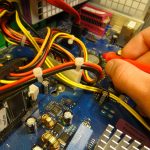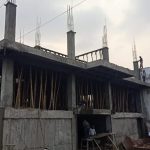When it comes to electrical wiring, ensuring safety and considering future needs are essential aspects of the installation process. Properly designed and installed electrical systems not only provide a safe living or working environment but also accommodate potential future changes or expansions. Here are some guidelines for electrical wiring with safety and future scope in mind:
1. Plan for the Future:
- Anticipate your future electrical needs. Consider potential upgrades, additions, or changes in technology that may require additional electrical circuits or outlets.
- Plan for increased power demands due to the addition of appliances, electronic devices, or home automation systems.
2. Use Quality Materials and Components:
- Invest in high-quality electrical materials, wires, outlets, switches, and circuit breakers. Quality materials are more durable and less likely to cause electrical issues.
- Ensure that all electrical components are compliant with local electrical codes and safety standards.
3. Adequate Capacity:
- Install an electrical panel with sufficient capacity (amperage) to accommodate your current needs and future growth. A 200-amp service is common for residential installations and can handle most demands.
- Leave room in the electrical panel for additional circuit breakers if needed in the future.
4. Ground Fault Circuit Interrupters (GFCIs) and Arc Fault Circuit Interrupters (AFCIs):
- Install GFCIs in areas where water is present, such as bathrooms, kitchens, and outdoor outlets. GFCIs provide protection against electric shock.
- Use AFCIs in bedrooms and living areas to detect and prevent electrical fires caused by arcing faults.
5. Surge Protection:
- Consider installing surge protectors or whole-house surge protection devices to safeguard sensitive electronic equipment from power surges and voltage spikes.
6. Proper Wiring Techniques:
- Employ a qualified electrician to install the wiring, ensuring that it is properly routed, secured, and protected within conduit or cable sheathing.
- Use separate circuits for major appliances like refrigerators, washing machines, and air conditioners to prevent overloads.
7. Labeling and Documentation:
- Label circuit breakers or fuses clearly in the electrical panel to identify the circuits they control. Create a directory for quick reference.
- Keep records of your electrical system layout and any modifications or additions for future reference.
8. Accessibility:
- Ensure that electrical outlets and switches are installed at convenient and accessible locations. This includes both standard outlets and USB outlets for charging devices.
- Consider installing smart outlets or switches that can be controlled remotely for future automation needs.
9. Safety Inspections:
- Periodically inspect your electrical system for signs of wear, damage, or overheating. Any issues should be addressed promptly.
- Schedule professional electrical inspections at regular intervals to ensure the safety and reliability of your electrical system.
10. Expansion and Wiring Conduits:
– If possible, install additional conduits or wiring pathways during construction. This can make it easier to add new wires in the future without major disruptions.
Remember that electrical work should be performed by qualified and licensed electricians who are knowledgeable about local electrical codes and safety standards. Safety is paramount, and professional installation and periodic inspections are essential for maintaining a safe and future-ready electrical system.



















